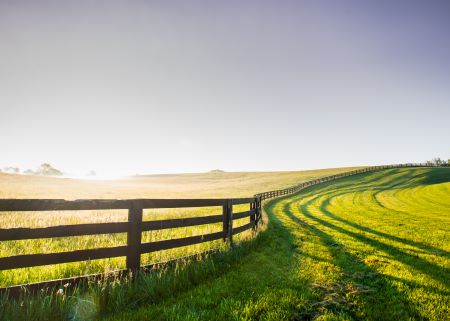Store Locator
Store Locator

Don't underestimate the value of farm fencing. An easily overlooked asset, a farm fence serves many purposes. It delineates property lines, contains livestock and enhances security. A fence may increase the farm's aesthetic appearance, too.
Whether a farmer needs to build a new fence, repair a damaged one or replace an old structure, fences can be costly. Planning ahead helps not only the farmer's budget, but also ensures the fence is constructed properly for the needed purpose.
Before undertaking the project, assess the existing fences to determine if they can be used in conjunction with any new fences. It may be less expensive to replace truly decrepit fences depending on its purpose.
Use common sense, don't skimp on materials or cut corners during construction. Allot an adequate amount of time to carefully lay out the fence lines. Confirm property lines to avoid placement errors that could anger neighbors.
When laying out the fence's path, avoid rough terrain, stony areas and steep climbs. Note the property's water sources in pasturing fields, as it may be possible to use a single water source in more than one pasture.
After leveling a fence line section, replace the vegetation to prevent erosion and weed growth.
Permanent boundary fences delineate property lines between the farm and its neighbors. They also prevent animals from straying into harm's way or causing damage on nearby properties. Permanent fencing works well for cropland, pastures that are used annually and lanes that direct livestock movement. Since these fences likely will not be relocated very often, invest in quality materials to ensure they will last and require few ongoing repairs.
Temporary fences move around to meet the farm's changing needs and to manage grazing patterns. Less expensive and easier to construct than permanent fences, these structures can be reconfigured with minimal effort and cost. They are usually kept in service for a few years.

Lanes connect livestock buildings, working facilities and pastures with water. A pasture that ties fields together also could be a passageway.
Lay out the lane so it follows a terrace or natural ridge to prevent gullies. It is best if the lane crosses a well-drained site. If the land is soggy, redirect the livestock and equipment by relocating temporary fencing from time-to-time.
The corner of each field closest to farm buildings is the best place to site lanes. If fields are on opposite sides of a road, place the gates across from each other so animals can go directly across. Use sturdy materials, especially for the hardware & fencing gates, so the animals do not break free or injure themselves and people can easily get in and out.
Regular maintenance for farm fences keeps them in service and reduces associated expenses.
Wire fences naturally loosen over time and with temperature changes. Inspect them regularly to ensure that they are at the proper tension. Also check the tighteners. Refasten loose wires to posts and splice any broken wires. Check the posts and anchor assemblies for maintenance issues. Clear weeds away from fences manually or with herbicides.
The find our more information for the farm or livestock, check out our Farm How-To. Need a product? Shop our online catalog or look up your local Southern States store.